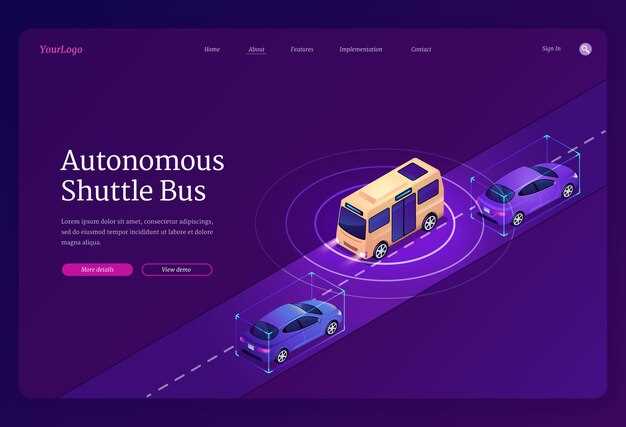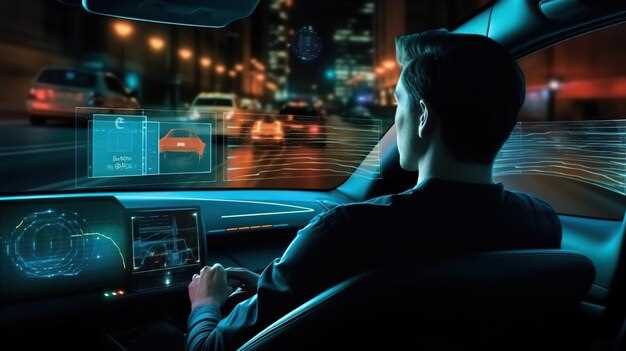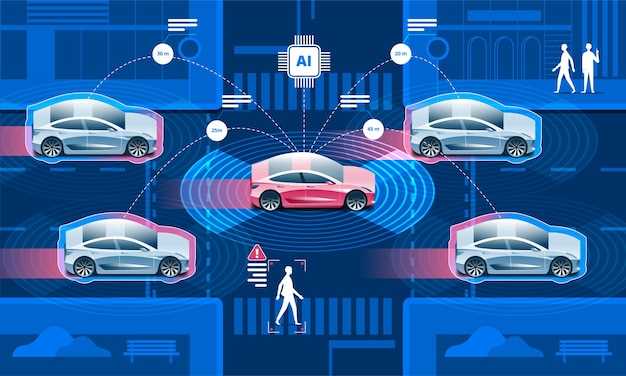
As we stand on the brink of a new era in transportation, the rapid pace of innovation in autonomous driving technology is reshaping how we perceive mobility. The integration of sophisticated algorithms, machine learning, and advanced sensor systems is not merely a trend but a transformative shift that promises to redefine our roads and cities. With the potential to enhance safety, optimize traffic flow, and reduce carbon emissions, the future of self-driving cars is both exciting and imperative.
The journey towards full automation is paved with significant advancements, and upcoming trends highlight a myriad of opportunities for both consumers and manufacturers. Key areas such as vehicle-to-everything (V2X) communication, enhanced artificial intelligence, and improved cybersecurity protocols are set to play pivotal roles in this development. These technologies will not only enhance the efficiency of autonomous vehicles but also ensure a more seamless integration into existing infrastructure.
Moreover, the future landscape of autonomous driving is closely intertwined with public policy and regulatory frameworks. As governments strive to implement guidelines for the safe deployment of autonomous vehicles, collaboration between tech companies, automotive manufacturers, and regulatory bodies will be essential. This concerted effort will facilitate the innovation needed to tackle challenges such as liability, data privacy, and ethical considerations, thereby paving the way for a safer and smarter transportation ecosystem.
Advancements in Sensor Technology for Self-Driving Cars
Recent advancements in sensor technology are crucial for the development of self-driving cars, enhancing their safety and performance. Lidar, radar, and camera systems have evolved significantly, providing autonomous vehicles with the necessary data to interpret their surroundings accurately.
Lidar technology uses laser beams to create detailed 3D maps of the environment. Its high-resolution imaging allows self-driving cars to detect objects, measure distances, and identify obstacles with remarkable precision. New developments in solid-state lidar have made these systems smaller, more affordable, and reliable under various weather conditions, thus accelerating their integration into autonomous vehicles.
Radar systems offer another layer of assurance by functioning effectively in adverse weather conditions, such as fog or heavy rain, where optical sensors may struggle. Recent advancements have improved the resolution and range of automotive radar, allowing self-driving cars to detect and track multiple objects simultaneously, contributing to smoother navigation and collision avoidance.
Cameras are increasingly enhanced by artificial intelligence algorithms that improve object recognition and classification capabilities. High-definition cameras now come equipped with capabilities like night vision and wide-angle lenses, enabling self-driving cars to function effectively in various lighting scenarios. Advanced image processing techniques allow these cameras to interpret traffic signs, lane markings, and pedestrian movements more accurately.
Furthermore, the integration of sensor fusion technology combines data from lidar, radar, and cameras to create a comprehensive view of the surrounding environment. This synergy enhances the situational awareness of self-driving vehicles, allowing for better decision-making while navigating complex urban landscapes.
In conclusion, the continuous evolution of sensor technology is crucial for the future of self-driving cars. As these technologies become more sophisticated and economical, they will play a vital role in bringing fully autonomous vehicles to the market, thus transforming the transportation landscape.
Impact of AI and Machine Learning on Autonomous Navigation

Artificial intelligence (AI) and machine learning are central to the development of self-driving vehicles, significantly influencing their navigation capabilities. These technologies enable autonomous systems to process vast amounts of real-time data from various sensors, allowing for better decision-making and adaptability in complex environments.
Machine learning algorithms, particularly deep learning models, are essential for interpreting data from cameras, LIDAR, and radar. They allow self-driving cars to identify and classify objects, decipher traffic signals, and understand road conditions. This capability ensures that the vehicle can react appropriately to dynamic scenarios, such as pedestrians crossing the street or unexpected obstacles appearing on the road.
Additionally, AI empowers autonomous vehicles to learn from experience. Through a repetitive training process, self-driving systems can refine their algorithms based on past performance. This results in improved error recognition and correction, enhancing overall safety and efficiency in navigation.
Moreover, AI facilitates the integration of various navigation systems, such as GPS and local mapping services, to provide accurate route information. By predicting traffic patterns and adjusting routes accordingly, self-driving cars optimize travel times and reduce congestion. This adaptability is crucial for urban environments where conditions can change rapidly.
The continuous development of AI and machine learning algorithms also drives advancements in vehicle-to-vehicle (V2V) and vehicle-to-infrastructure (V2I) communication. These technologies enable self-driving cars to exchange information with each other and with traffic management systems, further enhancing situational awareness and improving navigation strategies.
In conclusion, the impact of AI and machine learning on autonomous navigation is profound. These technologies not only enable self-driving vehicles to operate safely and efficiently but also pave the way for the future of transportation, creating a more connected and intelligent mobility ecosystem.
Legal and Ethical Considerations for Autonomous Vehicle Implementation

The rise of autonomous driving technology brings forth significant innovation in transportation, yet it simultaneously raises complex legal and ethical questions. As self-driving vehicles become integrated into public roadways, legislators and society must confront various issues surrounding liability, safety, and ethics.
Liability is a primary concern, particularly in the event of accidents involving autonomous vehicles. The question arises: who is responsible when a self-driving car is involved in a collision? Should liability rest with the manufacturer, software developer, or the vehicle owner? Existing liability frameworks may require reevaluation to accommodate this emerging technology.
Safety regulations also need to evolve. Currently, the testing and deployment of autonomous vehicles are subject to stringent regulations, but these must adapt as the technology matures. Standardized testing protocols need to be established to ensure these vehicles operate safely under various conditions. Additionally, regulatory bodies must consider how these technologies will interact with traditional vehicles and other road users.
The ethical implications of decision-making algorithms in autonomous vehicles are profound. For instance, how should a vehicle prioritize the safety of its passengers versus pedestrians in unavoidable accident scenarios? Establishing ethical guidelines for programming these decision-making processes is crucial. Developers must address public perceptions of fairness and transparency in how these choices are made.
Moreover, privacy concerns surrounding data collection and usage must be meticulously examined. Autonomous vehicles continuously gather vast amounts of data to enhance their functionality and safety, leading to potential privacy violations. Clear regulations are necessary to protect the personal information of users while enabling innovation.
Addressing these legal and ethical considerations is paramount for the successful deployment of autonomous vehicles. Without a robust legal framework and ethical guidelines, the full potential of innovation in this field may be undermined, leaving society unprepared for the shifts it will bring.




